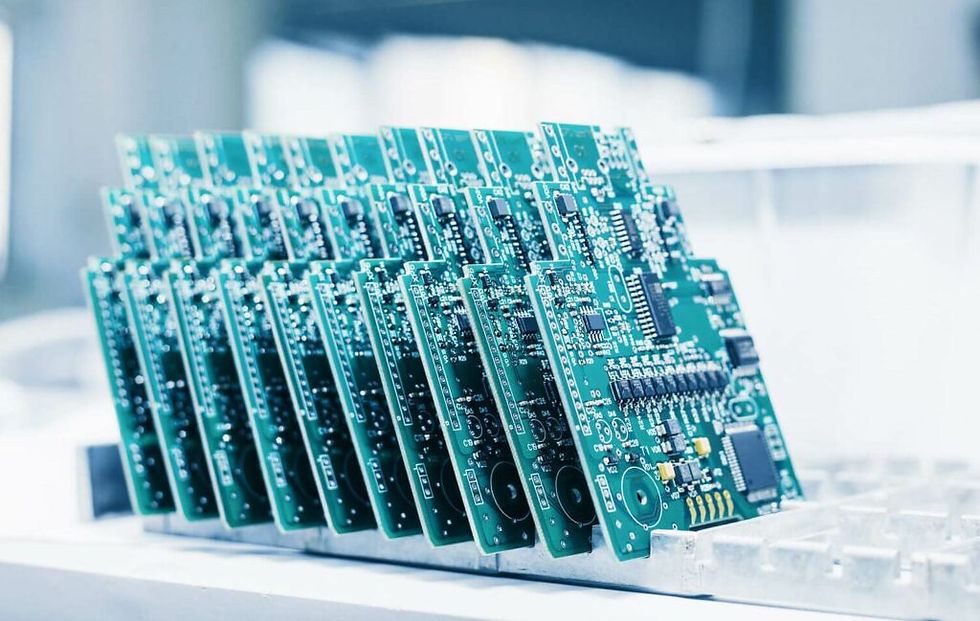The Role of Advanced PCB in Huawei's Revolutionary Tri-Fold Smartphone
- SUNSOAR TE.
- 11 de set. de 2024
- 3 min de leitura
In the ever-evolving world of mobile technology, Huawei has consistently pushed the boundaries of innovation. Their latest release, a tri-fold smartphone, once again captures the imagination of tech enthusiasts and industry professionals alike. While much attention is given to the phone’s cutting-edge display and unique foldable design, a critical component that powers this breakthrough is often overlooked: the printed circuit board (PCB).
Huawei's tri-fold smartphone exemplifies a significant leap in PCB design, utilizing advanced multi-layered PCBs to support the device's complex structure. These sophisticated PCBs form the backbone of the smartphone, ensuring seamless operation while maintaining its sleek form factor. But how exactly do these circuit boards enable such technological marvels?

A Revolution in Flexibility and Durability
Traditional PCBs are designed to support rigid, fixed devices, but Huawei’s tri-fold smartphone requires something far more adaptable. With its ability to fold into three parts, the phone’s internal components must withstand repeated bending and movement without compromising performance. The development of flexible PCBs, or flex-PCBs, is at the core of this achievement.
Huawei’s tri-fold device features an ultra-thin, yet highly durable, flexible PCB that can bend without losing its electrical conductivity or functionality. The flex-PCB is constructed using high-quality materials like polyimide or polyester film, providing the necessary elasticity while maintaining the robust electronic connections needed to power the smartphone’s high-performance processors, display, and communication modules.

Multi-Layer PCBs: Supporting More in Less Space
Another challenge that Huawei engineers faced in designing the tri-fold smartphone was incorporating all of the necessary components into a compact space. Modern smartphones are packed with high-performance processors, multiple cameras, 5G antennas, and a wide range of sensors, all of which require reliable connections.
To meet these demands, Huawei employs advanced multi-layer PCBs in the tri-fold device. These PCBs feature several layers of circuitry stacked on top of each other, separated by insulating materials. This design allows for a higher density of electronic components within a smaller footprint, which is essential for the limited space inside a folding phone.
Each layer of the multi-layer PCB in Huawei’s tri-fold smartphone plays a crucial role in connecting various components, including the OLED display, battery, and antenna, while ensuring minimal interference between signals. This ensures that users can experience seamless multitasking, high-speed data transfer, and crystal-clear communication, all packed into an ultra-slim, foldable form factor.

Heat Dissipation: A Major Concern
One of the most critical challenges for foldable smartphones, especially those as complex as Huawei’s tri-fold, is heat management. As devices become thinner and pack more powerful components, they generate significant amounts of heat, which can degrade performance over time.
The PCB in Huawei’s tri-fold smartphone has been designed with advanced thermal management features. Engineers have integrated heat-dissipating materials directly into the board’s structure, ensuring that heat generated by high-performance components is efficiently dispersed. This keeps the phone running at optimal temperatures, even during heavy use such as gaming or video editing, enhancing both performance and longevity.
The Future of Mobile Innovation
Huawei’s tri-fold smartphone represents the next generation of mobile devices, and at the heart of its success is the advanced PCB technology that makes this groundbreaking design possible. By combining flexible PCBs with multi-layered construction and sophisticated thermal management, Huawei has overcome some of the most significant challenges in foldable device design.
As mobile technology continues to evolve, innovations in PCB design will play an increasingly crucial role. Huawei’s tri-fold smartphone demonstrates that the future of mobile devices is not just in the displays and processors, but in the often-hidden technologies that enable these components to work together seamlessly.
Huawei’s innovation in PCB technology is a testament to their engineering prowess and their commitment to driving the mobile industry forward. With each new release, they are redefining what is possible, creating devices that are not only more powerful but more versatile, compact, and user-friendly. In the tri-fold smartphone, Huawei has not only delivered a stunning piece of hardware but also underscored the critical role that advanced PCB technology plays in the devices of tomorrow.
Comments